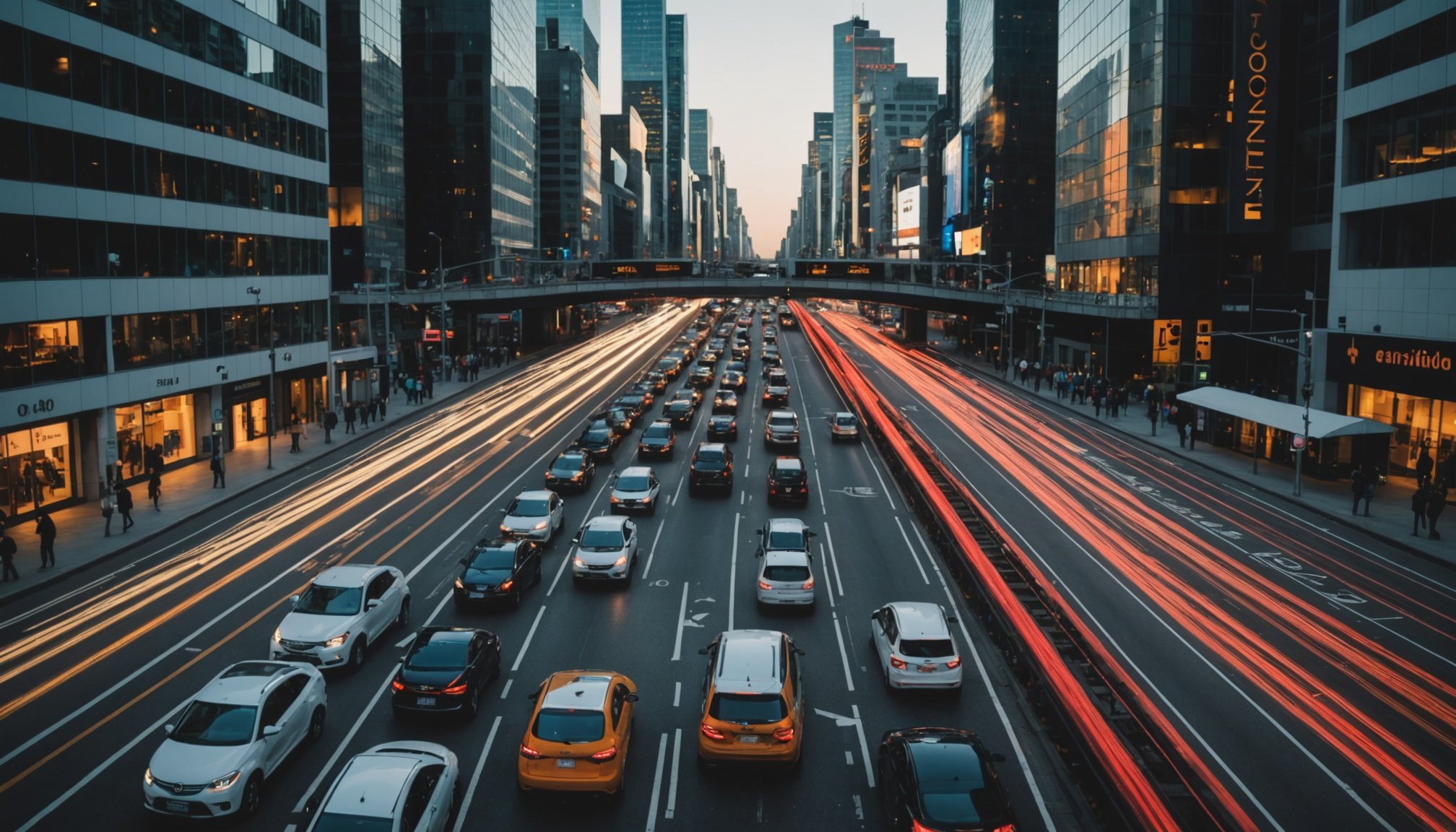Overview of AI in Traffic Management
AI traffic management is revolutionizing urban mobility through cutting-edge technologies that enhance commuter experiences. At its core, AI in traffic management involves utilizing machine learning and data analysis to optimize traffic flow and reduce congestion in smart cities. These technologies analyze vast datasets to predict traffic patterns, enabling city planners to make informed decisions that streamline urban transport systems.
Incorporating AI into traffic management brings several benefits, notably during rush hour commutes. By forecasting bottlenecks and adjusting traffic signals in real-time, AI helps alleviate congestion, ensuring smoother rides for commuters. This transformation is pivotal for achieving a more efficient transit ecosystem that supports economic growth.
This might interest you : Revolutionizing Real Estate Investment: The Impact of AI-Driven Market Analysis Tools
- Machine learning algorithms: These enable systems to learn from traffic data, dynamically adapting to varying conditions without manual input.
- Data analysis: This provides insights into traffic behavior, allowing for predictions that optimize traffic flow.
The importance of AI in improving urban mobility cannot be overstated. By integrating these technologies, cities can significantly reduce congestion, improve safety, and elevate the overall commuter experience. As urban areas continue to expand, embracing AI will be crucial in creating sustainable and convenient urban living environments.
Benefits of AI for Rush Hour Traffic Management
AI technologies bring substantial advantages in managing rush hour traffic, primarily focusing on traffic congestion reduction, improved safety, and enhanced commuter experience. Data-driven insights play a crucial role in identifying and addressing traffic snarls, ensuring smoother transit. By analysing real-time traffic data, AI systems preemptively adjust traffic signals, effectively diverting traffic away from congested routes. This capability reduces travel time during peak hours, offering a hassle-free commute.
Have you seen this : The art of unforgettable commercial ads: 15 classics to inspire
The implementation of AI also significantly improves safety. AI-powered surveillance can monitor traffic in real-time, rapidly detecting and responding to accidents or hazardous conditions. This immediate intervention aids in mitigating secondary incidents and maintaining roadway safety.
Enhancing commuter experience is another critical benefit. Smart route guidance systems, fortified by AI, dynamically suggest optimal routes, minimising delays and frustration for commuters. These systems take into account real-time conditions, proving instrumental in navigating daily urban traffic efficiently.
In summary, adopting AI for rush hour traffic management not only alleviates congestion and enhances safety but also transforms the commuting experience, fostering a more sustainable urban mobility environment. The integration of intelligent solutions is pivotal for cities aspiring to become truly smart cities.
Challenges in Implementing AI Solutions
Implementing AI traffic management presents several challenges, with data privacy being a primary concern. While AI technologies rely on vast data collections to function optimally, maintaining the privacy of this data is critical. Ensuring the anonymity and security of collected data to prevent breaches is paramount for public trust.
Infrastructure needs also pose a significant hurdle. Integration of AI systems requires a robust technological foundation within smart cities. Current urban infrastructure may require substantial upgrades to support comprehensive AI systems that manage urban mobility efficiently. This includes deploying sensors, cameras, and communication networks essential for real-time data analysis and response.
Additionally, there are ethical considerations intertwined with AI deployment. The push towards automation can lead to discussions about job displacement within traffic management sectors, requiring careful navigation to balance technological advancement with social responsibility.
Overall, while the benefits of AI are transformative for urban environments, addressing these challenges requires strategic planning and collaborative efforts from city planners, technologists, and policymakers. Solutions must prioritize data protection, bolster infrastructure, and consider socio-economic impacts to fully realize the potential of AI in urban mobility contexts.
Future Trends in AI Traffic Management
Emerging trends in AI traffic management are poised to further revolutionize urban mobility and address modern challenges in smart cities. As we look to the future, several key advancements are on the horizon.
One significant trend is the integration of autonomous vehicles into traffic systems. These self-driving cars rely on complex AI algorithms to navigate city streets smoothly and safely, potentially reducing human error and enhancing traffic efficiency. The presence of such vehicles will necessitate new traffic management strategies that seamlessly incorporate them into existing infrastructure.
Smart infrastructure is another critical development. These advanced systems involve using sensors, connected traffic lights, and digital signage to create a responsive urban environment. Such infrastructure can communicate with both human drivers and autonomous vehicles, offering real-time updates and guidance to manage flow and congestion more effectively.
Furthermore, the future will likely see greater adoption of predictive analytics. By harnessing AI, cities can anticipate traffic issues before they arise, optimizing routes and minimizing delays. This forward-thinking approach not only promises to enhance commuter experiences but also supports sustainable growth within urban areas.
As these trends unfold, embracing technological advancements will be crucial for cities to remain competitive and livable.
Case Studies of Successful Implementations
Examining successful AI case studies in smart city initiatives offers valuable insights into innovative strategies in urban planning. In City A, the implementation of AI traffic management systems led to notable improvements. Utilizing machine learning algorithms and real-time data analytics, City A’s traffic flow optimized significantly, reducing congestion by 30% during peak hours. The city integrated smart traffic lights that dynamically adapted to vehicular volume, showcasing the efficiency of targeted AI applications.
City B: Innovative Approaches
City B adopted unique approaches by employing AI traffic management solutions across its urban planning. Through advanced predictive analytics and smart infrastructure, the city successfully minimized pollution levels by rerouting traffic away from dense residential areas, thus enhancing air quality. These initiatives highlight the transformative power of AI in rethinking conventional urban mobility paradigms.
City C: Lessons Learned
City C’s journey illustrates pivotal lessons in adopting AI for urban needs. Initially facing resistance due to data privacy concerns, the city overcame hurdles by investing in robust cybersecurity measures and fostering public trust. Post-implementation metrics showed a 25% decrease in average travel time and a boost in commuter satisfaction. The comparisons emphasize each city’s commitment to refining smart city initiatives through strategic AI deployments.







